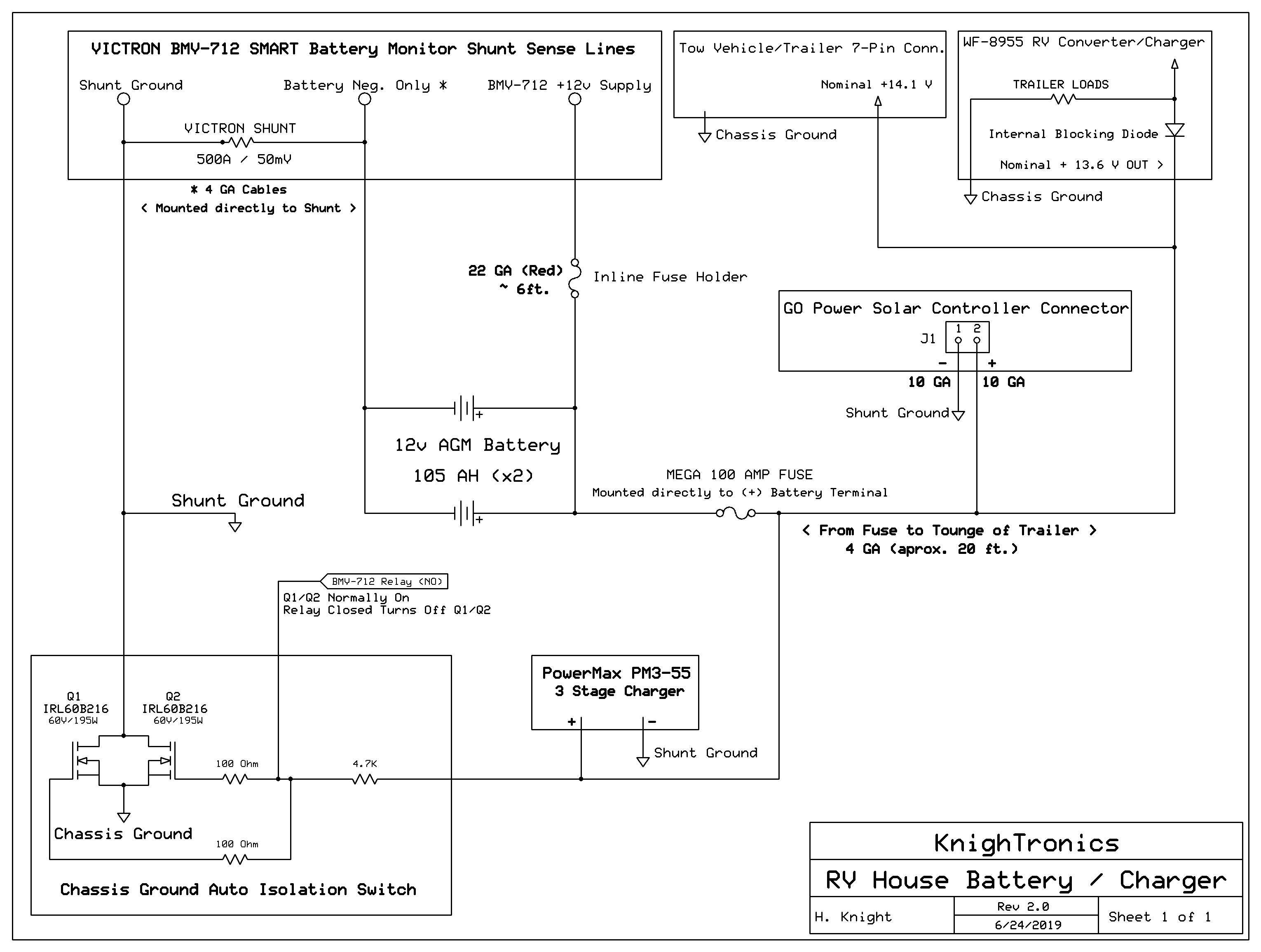Hi All !
We are using a BMV-712 in an RV, and we were planning to add a Battery Protect (BP-220). However, the loads and Converter / Charger output are all wired together at the far end of the trailer, and the batteries are in the front passthrough. So separating the Converter/Charger from the loads would be difficult. Since Reverse Current through the BP-220 is NOT recommended (hence the concern about separating the loads from the charging sources), the standard "high side" wiring would be a problem.
Is there a product that could be used as a "low side mosfet switch", to be placed between the BMV shunt and RV chassis ground as a battery disconnect ? I think that the BP-220 could work, EXCEPT for the fact that the BP internal circuits need power from the "Battery" or "In" terminal on the BP.
A Battery Protect device that could get it's internal "housekeeping voltage" from a separate (low current) connection to the battery would seem to be a desirable feature so that the BP could be used as a "low side mosfet switch".
Is anyone aware of such a device ? I'm sure something could be designed to be controlled by the relay in the BMV-712 to disconnect the shunt from chassis ground at the "low voltage" alarm trip point.
Any thoughts or suggestions would be appreciated !


